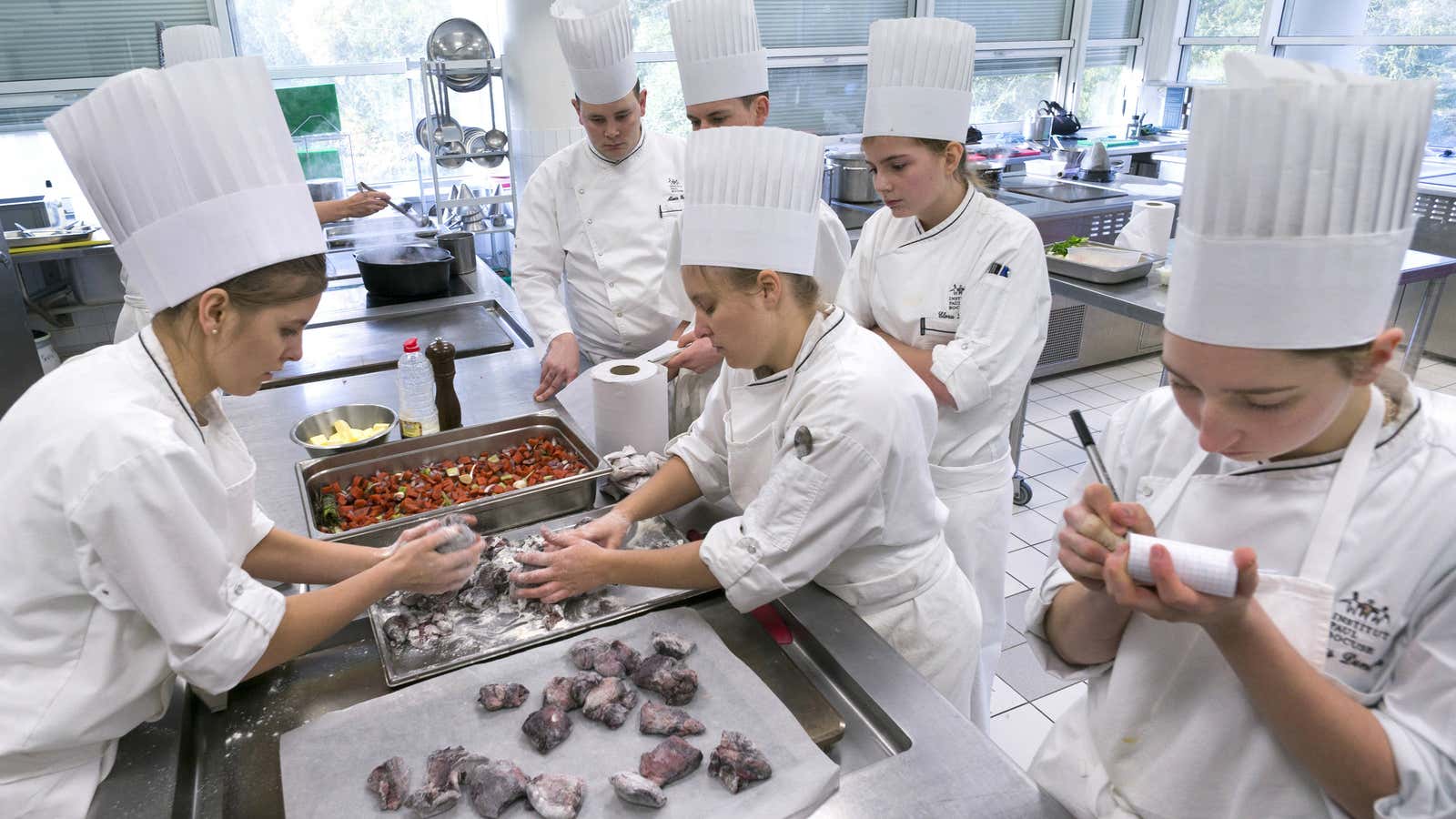The American restaurant industry is not for the faint of heart. Servers’ wages often lean heavily on tips, and basic benefits packages are few and far between. The lack of support is especially hard on pregnant mothers and new parents, who typically can’t afford to take extended unpaid leave.
Where public policies fall short, at least one restauranteur prone to experimentation is trying to make up the difference. This week, New York City restaurateur Danny Meyer announced that, starting in 2017, all new parents working for his restaurant group—be they women, men, or domestic partners—would have their benefits expanded to cover paid leave, reports Eater:
All full time employees in the front and back of the house with more than one year of employment will be offered 100 percent of their base wages for the first four weeks after their child is born or adopted. After that, all employees will be offered 60 percent of their base wages for the next four weeks.
Granting employees that benefit at the 14 restaurants that make up Meyer’s own Union Square Hospitality Group might encourage other high-end restaurateurs to follow suit.
Thanks to a lack of support, too often women in the restaurant industry—from chefs to dish washers—are forced to choose between advancing their careers or having children. Thus, the highest levels of restaurant management remain dominated by men.
This isn’t the first instance of Meyer pushing the envelop for the dining industry. Last year, he announced that his Manhattan restaurants would begin adopting a no-tipping, “hospitality included” policy—which eliminated the gratuity section on customer bills. Instead Meyer’s restaurants began charging slightly more for the meal and redistributed the extra earnings across the restaurant staff, to boost wage parity and security among employees. That change hasn’t been so easy to grasp for restaurant customers. But as with so many things, social conventions take time to break.
